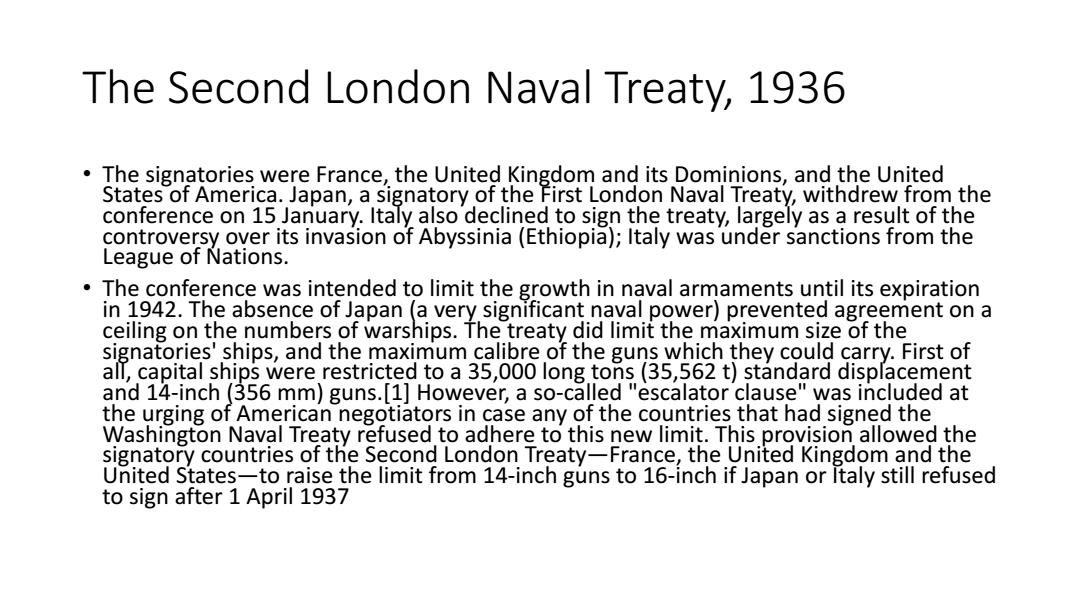正在加载图片...

The Second London Naval Treaty,1936 The signatories were France,the United Kingdom and its Dominions,and the United States of America.Japan,a signatory of the First London Naval Treaty,withdrew from the conference on 15 January.Italy also declined to sign the treaty,largely as a result of the controversy over its invasion of Abyssinia(Ethiopia);Italy was under sanctions from the League of Nations. The conference was intended to limit the growth in naval armaments until its expiration in 1942.The absence of Japan(a very significant naval power)prevented agreement on a ceiling on the numbers of warships.The treaty did limit the maximum size of the signatories'ships,and the maximum calibre of the guns which they could carry.First of all,capital ships were restricted to a 35,000 long tons(35,562 t)standard displacement and 14-inch (356 mm)guns.[1]However,a so-called "escalator clause"was included at the urging of American negotiators in case any of the countries that had signed the Washington Naval Treaty refused to adhere to this new limit.This provision allowed the signatory countries of the Second London Treaty-France,the United Kingdom and the United States-to raise the limit from 14-inch guns to 16-inch if Japan or Italy still refused to sign after 1 April 1937The Second London Naval Treaty, 1936 • The signatories were France, the United Kingdom and its Dominions, and the United States of America. Japan, a signatory of the First London Naval Treaty, withdrew from the conference on 15 January. Italy also declined to sign the treaty, largely as a result of the controversy over its invasion of Abyssinia (Ethiopia); Italy was under sanctions from the League of Nations. • The conference was intended to limit the growth in naval armaments until its expiration in 1942. The absence of Japan (a very significant naval power) prevented agreement on a ceiling on the numbers of warships. The treaty did limit the maximum size of the signatories' ships, and the maximum calibre of the guns which they could carry. First of all, capital ships were restricted to a 35,000 long tons (35,562 t) standard displacement and 14-inch (356 mm) guns.[1] However, a so-called "escalator clause" was included at the urging of American negotiators in case any of the countries that had signed the Washington Naval Treaty refused to adhere to this new limit. This provision allowed the signatory countries of the Second London Treaty—France, the United Kingdom and the United States—to raise the limit from 14-inch guns to 16-inch if Japan or Italy still refused to sign after 1 April 1937